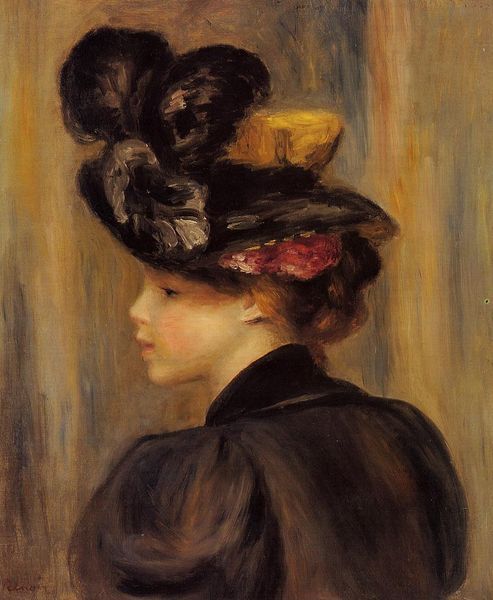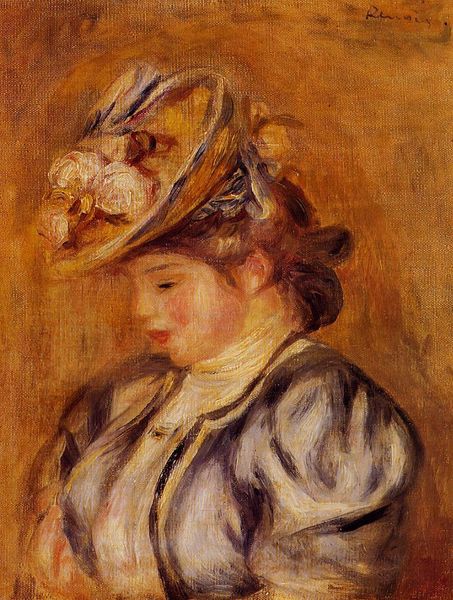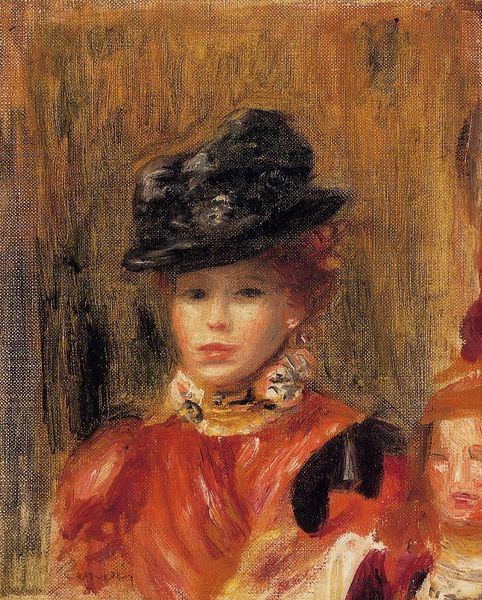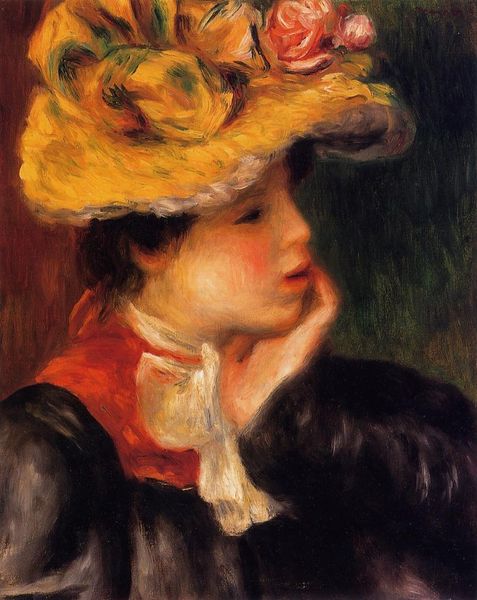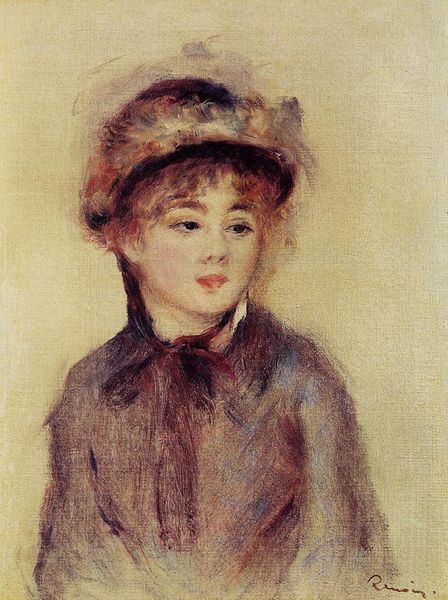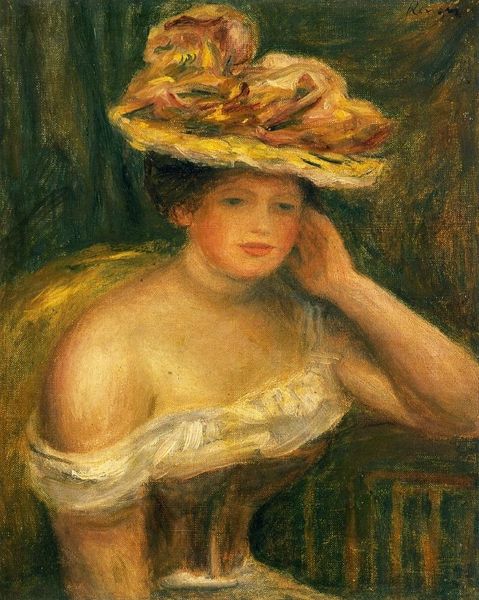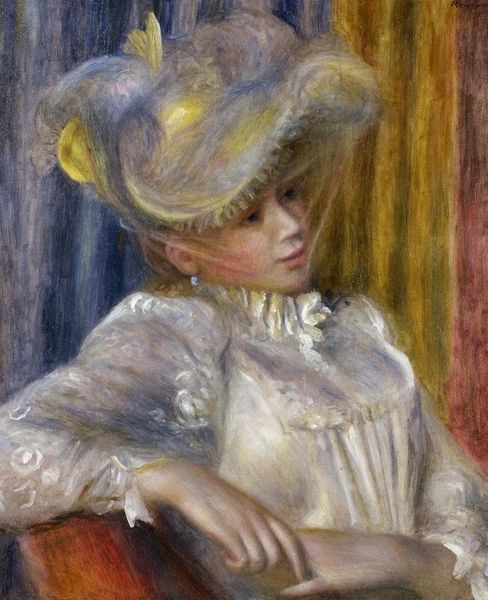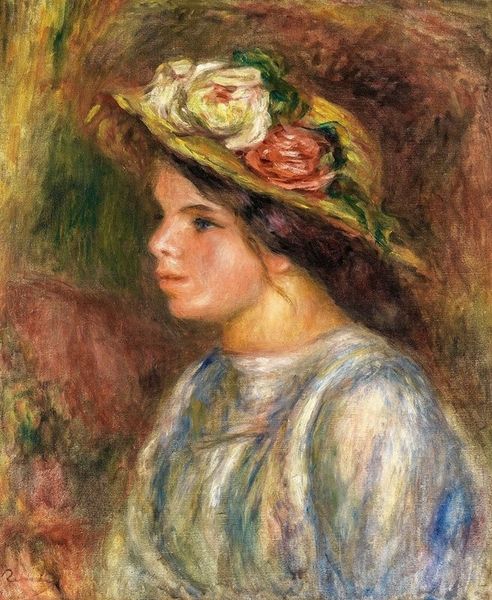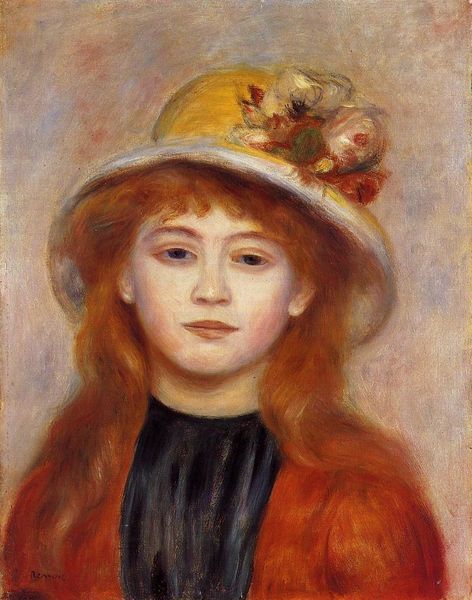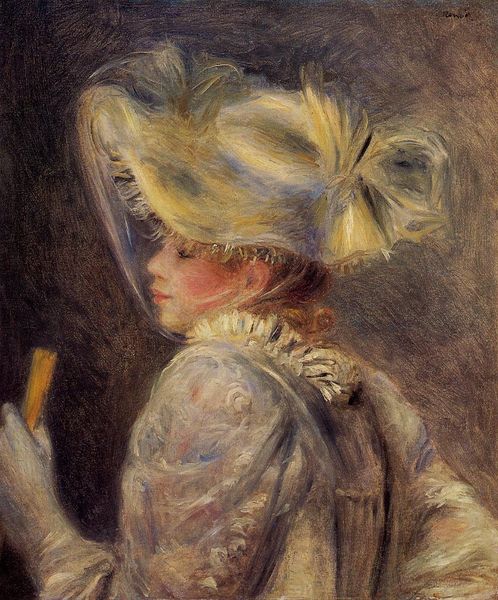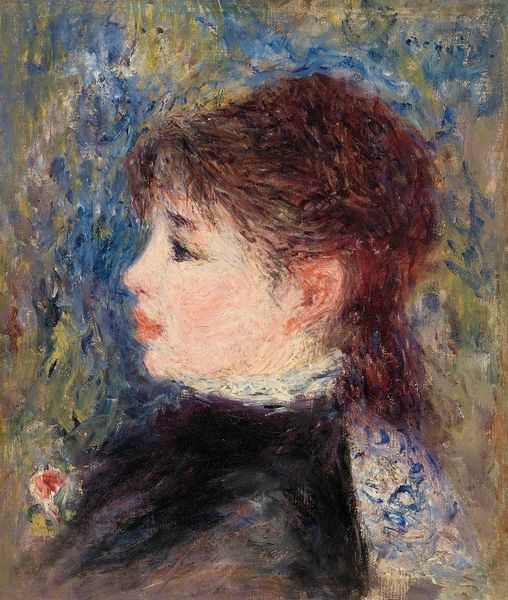
painting, oil-paint
#
portrait
#
painting
#
impressionism
#
oil-paint
#
figuration
#
oil painting
#
post-impressionism
#
modernism
Copyright: Public domain
Curator: Gauguin painted this oil on canvas portrait, "Ingeborg Thaulow," in 1883. Editor: My first impression is of subtle elegance, almost a quiet drama, heightened by the obscured face. Her hat alone is practically a character in itself. Curator: Indeed. Gauguin met Ingeborg, who was Norwegian, through her husband, a fellow artist. This painting marks a crucial moment of his move towards impressionism. It is argued the Thaulows offered significant support to Gauguin during a difficult period in his artistic development. Editor: You can definitely sense Impressionist tendencies in his rendering, though it does seem slightly muddied to me. Her elaborate black hat acts like a veil of shadows; what do you think that symbolizes here? Perhaps secrets, veiled expectations of women in the late 19th century? Curator: Perhaps, or simply the style of the era! But it is important to note that the professional artistic world at this time was only beginning to offer increased visibility for women, so depicting his female subjects, particularly the wives of fellow artists, was politically loaded, even subversive. The way he chooses to represent her would have been socially charged. Editor: Yes, certainly, but Gauguin was deeply immersed in finding ways that symbols held powerful visual links across different cultures. It's hard to believe that the heavy hat and the obscured profile are random. It almost seems as if he wants us to see her as an archetype. Her profile, like a silhouette, tells its own symbolic story. Curator: I would say it marks a transition in Gauguin's own stylistic development, a pivotal moment in his approach to portraiture as he absorbed and then rejected many established approaches to making images of women, particularly the images of fashionable women by Parisian artists like Manet, Caillebotte, and Renoir. Editor: Considering Gauguin's later exploration of more vivid color and overt symbolism, it is amazing to consider that this piece served almost as an aesthetic foreshadowing of what would come later in his oeuvre. I’ll look at Gauguin portraits in an entirely different way moving forward! Curator: A vital and, dare I say, formative moment in the social and artistic world of impressionist circles.
Comments
No comments
Be the first to comment and join the conversation on the ultimate creative platform.
